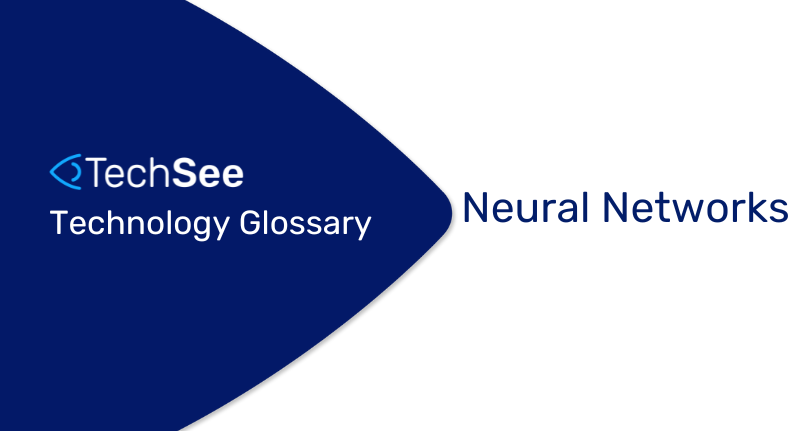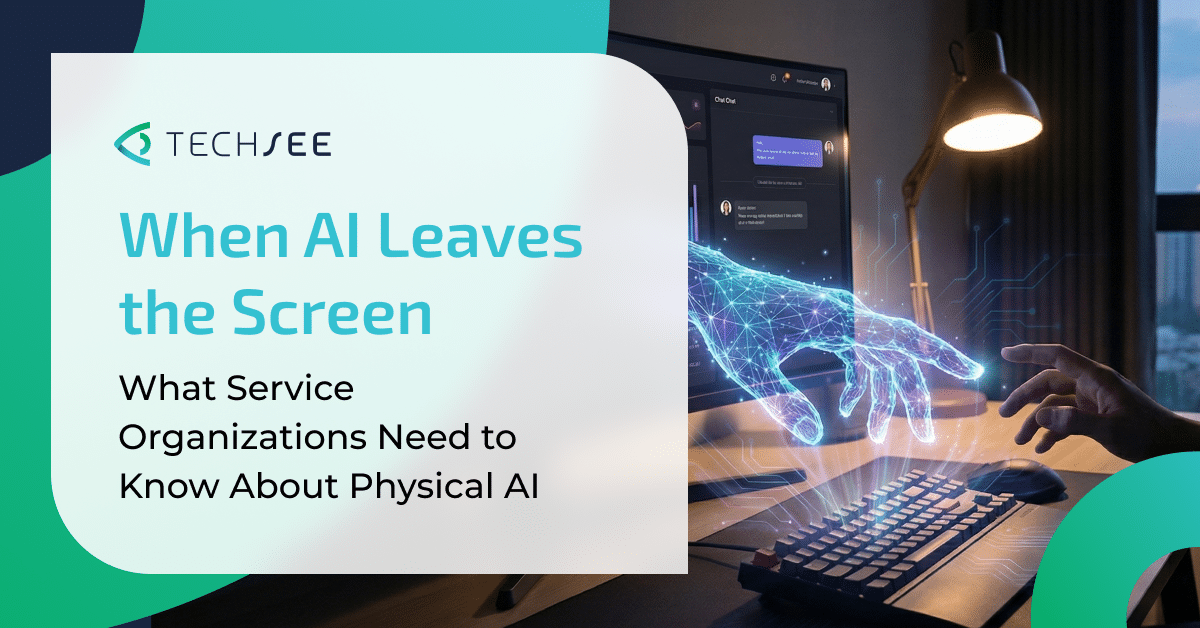What are Neural Networks?
Neural networks are a fundamental component of artificial intelligence (AI) technology that significantly revolutionizes the service industry. At TechSee, we leverage neural networks as part of our innovative visual service AI technology to empower service and customer experience organizations.
Neural Networks in Service
In the service context, neural networks are a subset of machine learning algorithms designed to simulate the human brain’s decision-making process. They consist of interconnected nodes (artificial neurons) that work in layers, processing and analyzing vast amounts of data to identify patterns, make predictions, and guide decision-making. Neural networks are critical to training, automating, and optimizing textual and visual artificial intelligence solutions.
TechSee’s Visual Service Technology utilizes neural networks to enhance customer interactions.
How do Neural Networks Work?
Below is a high-level overview of how these networks work:
- Basic Building Block: Neuron (Perceptron): A computational unit called a neuron or perceptron is at the core of a network. It takes in multiple inputs, performs a weighted sum of them, adds a bias term, and then applies an activation function to produce an output.
- Layers and Architecture: Neurons are organized into layers. The input layer takes in the initial data, the output layer produces the final result, and there can be one or more hidden layers in between. The connections between neurons, called weights, determine the strength of influence one neuron has on another.
- Feedforward Pass: Information flows through the network in a feedforward manner. Each neuron’s output becomes the input for the next layer. This process continues until the final output is generated.
- Activation Function: The activation function is a crucial component of each neuron. It introduces non-linearity to the model, enabling the network to learn complex relationships in the data. Common activation functions include ReLU (Rectified Linear Unit), sigmoid, and tanh.
- Learning and Training: These networks learn by adjusting the weights and biases to minimize a defined loss or error function. This process is called training. The network is presented with a labeled dataset, and it adjusts its parameters using optimization algorithms (e.g., gradient descent) to reduce the error between predicted outputs and actual targets.
- Backpropagation: The optimization process involves backpropagation, which computes the gradient of the loss function for the network’s weights. This gradient is used to update the weights in a direction that reduces the error. The process is repeated for many epochs until the model converges to a satisfactory solution.
- Generalization: The trained network should be capable of generalizing its knowledge to new, unseen data. This is a critical aspect of machine learning. Overfitting (when the model performs well on training data but poorly on the latest data) is a common challenge that needs to be addressed.
- Hyperparameters: Neural networks have various hyperparameters, such as the number of layers, the number of neurons in each layer, the learning rate, and more. Tuning these hyperparameters is essential for achieving good performance.
Overall, neural networks are powerful tools for various tasks, including image recognition, natural language processing, game playing, and more. Based on that learning, they can learn complex patterns from data and make predictions or classifications.
In summary, neural networks are a foundational artificial intelligence technology critical in TechSee’s Visual Service Technology and integrated generative AI solutions. By allowing agents and service automation solutions to see from the customer’s perspective and leveraging AI and AR to guide interactions, TechSee enables service organizations to deliver superior, efficient, and visually enhanced service experiences.
To learn more, schedule your complimentary consultation today.





